#hypertext
Explore tagged Tumblr posts
Text
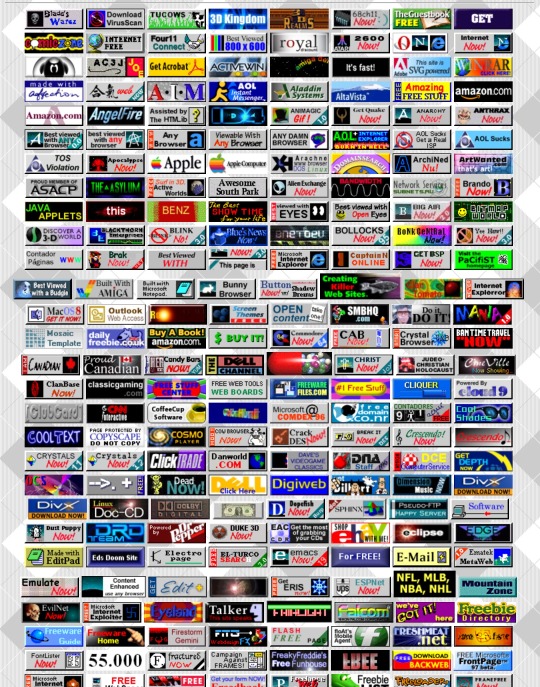
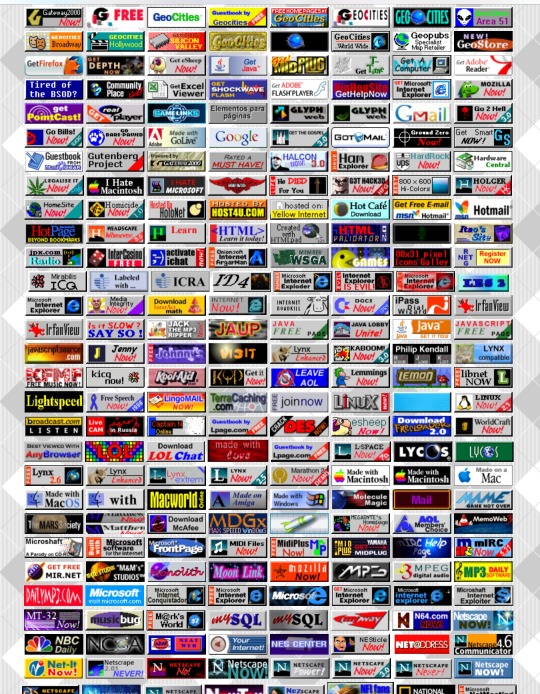
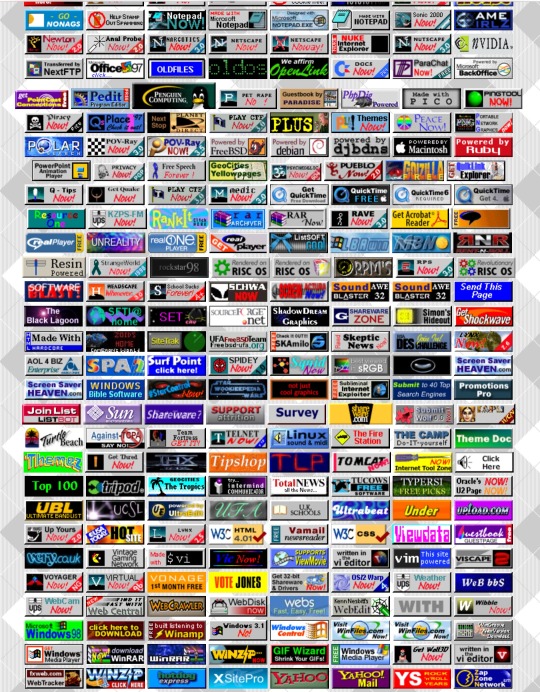
Web buttons from the 1990’s-2000’s
#old web#web design#webcore#early web#geocities#web buttons#1990s#nostalgia#nostalgic#2000s#early 2000s#netscape#internet#internet explorer#www#world wide web#browser wars#mozilla#firefox#intel#browser#Hotmail#Cern#Hypertext#gopher#AOL#yahoo#Windows 95#dot com#dot com bubble
290 notes
·
View notes
Text
The Ontology of Text
The ontology of text refers to the study of the nature, structure, and being of text, focusing on what text is at its most fundamental level. This exploration can span several philosophical and theoretical perspectives, often addressing questions about the existence, identity, and categorization of text as an entity. Here’s a breakdown of key aspects:
1. Text as an Ontological Entity:
Material vs. Abstract: Text can be considered both as a material object (e.g., a book or a written document) and as an abstract entity (e.g., the content or meaning conveyed by the text). The ontology of text thus involves understanding how these two aspects coexist and relate to each other.
Text as a Work vs. Text as a Document: The distinction between a text as a work (the conceptual or intellectual creation) and as a document (the physical or digital manifestation) is crucial in ontology. For instance, different editions of a book may be considered different documents but the same work.
2. Identity and Persistence:
Sameness and Variation: The ontology of text deals with the question of what makes a text the same across different instances or versions. What remains consistent between different editions or translations of a text? How much can a text change before it is considered a different text?
Temporal Aspects: How does the identity of a text persist over time? This includes considerations of how historical context, authorial intent, and reader interpretation might affect the identity of a text.
3. Structure of Text:
Hierarchical vs. Network Structures: Text can be seen as having a hierarchical structure (e.g., chapters, paragraphs, sentences) or a network-like structure (e.g., hypertext or intertextuality). The ontology of text examines how these structures are constituted and how they affect the nature of text.
Units of Text: What are the basic units of text? Words, sentences, paragraphs, or perhaps even smaller or larger units? The ontological inquiry involves defining and categorizing these units.
4. Function and Intent:
Authorial Intent: The role of the author's intention in the ontology of text is a major consideration. Is the meaning of a text tied to what the author intended, or does it exist independently?
Reader Interpretation: The ontology of text also considers the role of the reader or audience in constituting the text. Is the meaning of a text something inherent, or is it something that comes into being through interpretation?
5. Intertextuality and Contextuality:
Intertextual Relations: Texts often reference or build upon other texts. The ontology of text considers how texts are related to one another and how these relationships affect their existence and identity.
Contextual Dependency: The meaning and existence of a text can be dependent on its context, including cultural, historical, and situational factors. The ontology of text examines how context shapes what a text is.
6. Digital and Hypertext Ontology:
Digital Texts: The advent of digital texts introduces new ontological questions. How do digital formats affect the nature of text? How does hypertext, with its non-linear structure, change our understanding of text?
Versioning and Fluidity: Digital texts can be easily modified, leading to questions about the stability and identity of texts in a digital environment. What does it mean for a text to have a version, and how does this affect its ontology?
7. Philosophical Perspectives:
Structuralism and Post-Structuralism: These schools of thought provide frameworks for understanding the ontology of text, focusing on the underlying structures of language (structuralism) and the fluidity and instability of meaning (post-structuralism).
Phenomenology: This approach might consider the experience of the text, focusing on how it appears to consciousness and the role of the reader in bringing the text to life.
The ontology of text is a rich and complex field that intersects with many areas of philosophy, literary theory, linguistics, and digital humanities. It seeks to answer fundamental questions about what text is, how it exists, how it maintains identity, and how it relates to both its material form and its interpretation by readers.
#philosophy#epistemology#knowledge#learning#education#chatgpt#metaphysics#ontology#Philosophy of Language#Literary Theory#Semiotics#Textual Identity#Materiality of Text#Digital Humanities#Intertextuality#Authorial Intent#Reader Response#Textuality#Structuralism#Post-Structuralism#Phenomenology#Document Ontology#Hypertext#Cultural Context#Textual Analysis#Abstract Entities#Textual Structure#Media Theory#text#linguistics
23 notes
·
View notes
Quote
Links reveal a creative process that tends to stay hidden in the writer’s mind – the process of connecting ideas and constructing something bigger: arguments, stories and even poems.
When AI summaries replace hyperlinks, thought itself is flattened
8 notes
·
View notes
Text
Punchdrunk as hypertext
I am in the greenhouse room, and I clutch at my heart. What I see before me is a person in black latex receiving a drug on their tongue like holy communion. There are only two characters in the room: Kampe, and their dealer. But what I experience is much greater, because I can hear the music echoing: the music signalling that on the other side of the city, a city has fallen and a princess is dead, hanging up above, bare-chested and bloodied for all to see.
I remember her. It was her birthday, we danced with her, she stumbled into the arms of her lover.
I know this from an hour ago, before time reset.
I am in the flower shop, and I gasp. A tango is playing through the tinny speaker of the radio. The shopkeeper picks up a bouquet - her bouquet - and he twirls around, holding it in his arms, dancing a tango with a prop that is the start of Persephone's story, to the music that is the near-climax of her story.
I know this from months before, because I have been here before but it was different. It's different every time. There's so much to take in, and I have to choose who I see and what I focus on, and the context I bring with me is constantly developing.

That's a familiar criticism. Too many choices, no coherent story.
But Pope (2009) isn't a criticism of a Punchdrunk masked show - it's a criticism of a HTML novella, These Waves of Girls, hypertext, a story that you wade into by clicking through links. A story that leads you down many different paths, depending on how you choose to follow them.
Don't worry if you get lost - you're already lost. Embrace your curiosity. Turn your fear into desire. Fortune favours the bold.
The link is the most important new form of punctuation since the comma... Links make manifest the way texts relate to other texts, the way they structure themselves, and the way they restructure our thinking.
A reference to another scene, a repeated movement hearkens back to something you witnessed minutes ago, hours ago, weeks ago. A prop moves across buildings, touched by many hands along the way. Characters intersect, and you take a different path, thrown into another story before you reunite for a finale.

You ever gone down a Wikipedia rabbit hole? Clicking link after link, opening up a dozen new tabs, somehow finding your way from Scooby-Doo to Leukemia to learning the Yupik word for bread?
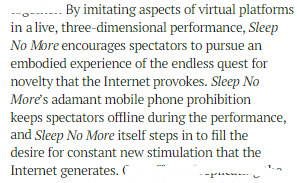
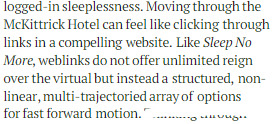
Her Story is an FMV video game where you uncover the story by searching a database of video clips for keywords. As you search for clues, things that don't make sense stick in your mind, because they might be important later. A new piece of information can cast something you've already seen in a completely new light.
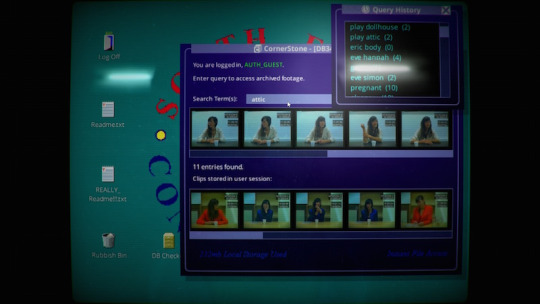
You can stay with one thread, or you can let your curiosity guide you, bouncing around from one storyline to the next. It might not make sense at first, seeing everything out of order - but then as you make sense of it, you will form those connections, perhaps even more strongly than you would have done if you had watched a linear story that you didn't have to work for.
...the spaces of reading and writing shift in a hypertextual environment and the reader is required to adopt a mode of engagement in terms of an unstable textual terrain, which involves them in productive and creative processes as well as receptive ones...
"Because everything is constructed, everything becomes significant, in the artistic context everything ordinary becomes extraordinary." - Sam Booth
Uncle Buddy's Phantom Funhouse is a collection of digital and physical ephemera - notes, photos, lyrics, scribbles, all telling the story of this man you knew as Uncle Buddy, who has now died. You leaf through them, choosing what to pay attention to, taking away what you deem significant, building an image based on what he left behind.
It does have an option to spell out the answer to the riddle if you want to skip that, but the significance might be lost in the process. ...

Description of Tamara, an example of theatre dubbed 'hyperdrama', theatrical hypertext.
"Punchdrunk's Sleep No More is an astonishing production that does nearly everything I had imagined hyperdrama could achieve, and much that I had assumed it could not." ... "The experience works here, but it is going to be different for everyone. How many people get to see Mrs. DeWinter’s scene? Of those, how many are in the bar when the band strikes up Paper Moon ? How many get the Woyzeck allusion the next day, or ever? This is the nature of the medium."
Seriously, read this article by Mark Bernstein.

It’s not a game. Nothing you (or they) can do can prevent the fall of Troy or its terrible aftermath. Yet your choices (and chance) matter, and your reading of Those Trojan Girls is likely to differ from any other reading.
(hypertext is also, sadly, ephemeral, linked to its time and place. The above linked work is less than a decade old but I doubt I'd find what I need to read it, the right software and the right hardware of the right version with all the right features. Digital rot everywhere. Who has a floppy drive anymore? Who has Flash anymore? Just like nobody will experience The Burnt City anymore. Just like, soon, nobody will experience the McKittrick Hotel anymore.)
My first show: I see a man swinging upside down, hanging from the ceiling. The image haunts me. I do not know him, nor do I know the two onlookers. But it stays with me.
Many months later, I see him again, and he is an old friend - his name is Laocoön, a seer, and he is burdened with a prophecy from Apollo. Cassandra looks on, distraught, while the vengeful god puppets him. He is showing her the fate of her sister.
I remember her. It was her birthday. We danced with her. I watched her die, over and over and over. I remember every moment, every branching path, every intersection, and she isn't here, but she's all around us.
"There is no longer one author but two, as reader joins the author in the making of the text" - Jay David Bolter, "Literature in the Electronic Writing Space" "Go back into the light. Remember what you've seen... We love you so deeply. It's nothing without you." - Lily Jo Ockwell as Persephone, September 24, 2023
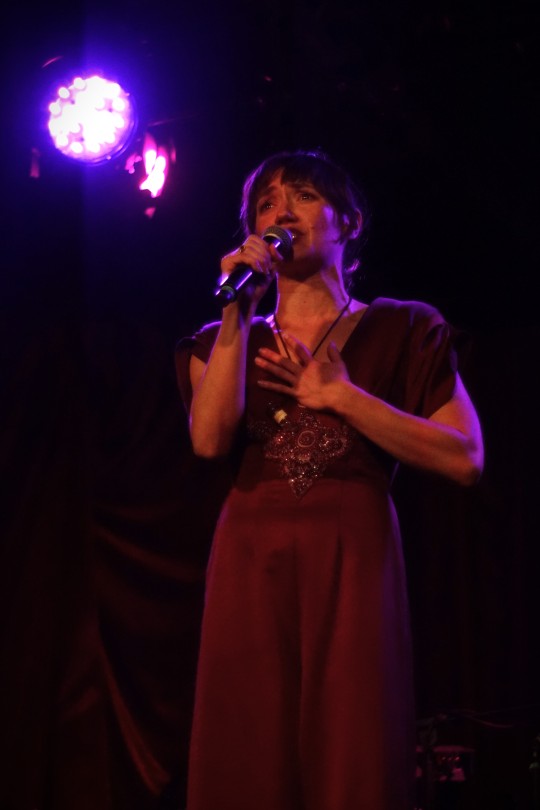
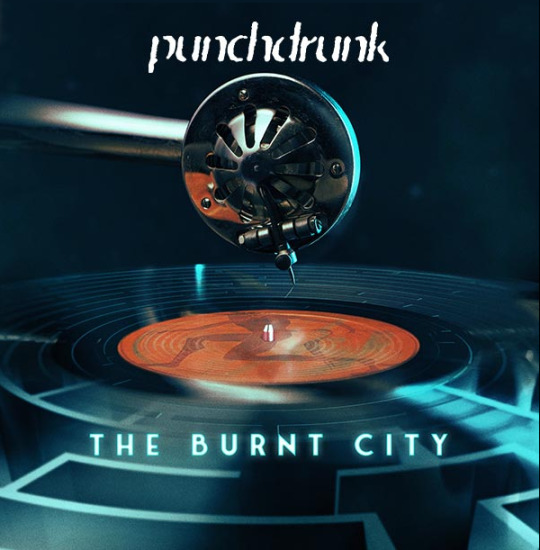
Lily photo by @rhianbwatts
#punchdrunk#sleep no more#the burnt city#the drowned man#hypertext#hypermedia#interactive fiction#twine interactive fiction#ergodic literature#cybertext#immersive theatre
27 notes
·
View notes
Text
On originality in writing
Sometimes, I see people say that everything has already been written. That you cannot come up with anything new at all.
So I'm here to say that I don't agree.
Firstly: only you can write things from your perspective, even when at the same point of time as some of the best living writers. Even if it has already been done, no-one else can do it like you.
And secondly: If you dwell on core originality, maybe you need to know that it is not always about writing itself... and that to "write", the craft of writing can be blurred sometimes. Also, the ideas to create a new form can come out of where you least expected them.
To give examples of works I find fascinating:
Cain's Jawbone (Torquemada, 1934) = pages in a wrong order, reader has to solve a murder mystery while arranging the pages correctly.
Gadsby (Ernest Vincent Wright, 1939) = letter E never once used in the whole book.
Three of codes (Jonathan Safran Foer, 2010) = book in which there are holes in pages so that they create new meanings as you look at the whole
Trhlina (Jozef Karika, 2016) = hypertexts inside the book to make the reader doubt if the written is true or not
I Have Said Nothing (J. Yellowlees Douglas, 1994) - hypertext, can be cyclic, you can choose storylines... -> makes every reader have a different experience
S. (J J Abrams, Dough Dorst, 2013) - where the real story is actually about the notes on the side of the book's pages
bathroom poetry - been here since forever, hovever: Caitlin Cook took it to another level in Conversations with strangers
blackout poetry - transforming finished texts; my favourite ever example here
experimantal poetry - my favourite ever example from Václav Havel here
six-word stories - like: "Wrong number," said the familiar voice.
Then, there are stories only using one-syllabe words. Or stories in which all the words begin with the same letter and such... I find them fascinating, too.
...What kind of "weird" form of art do you like? :)
...
interesting bonus, which I no longer see as literature, however, as art, I find hilarious: NeoNio (Jim Andrews, 2001, 2021 - x) - electronic poetry in sound and visuals
#writing#original art#i mean not mine but with a super dope idea#reading and writing#tbr list#caitlin cook#bathroom poetry#hypertext#blackout poetry#ernst hemingway#hemingway#six word story#experimental poetry#I have said nothing#S.#Trhlina#Three of codes#Gadsby#Cain's jawbone#NeoNio#art#found in books#books#on writing#books and reading#books and writing
2 notes
·
View notes
Text
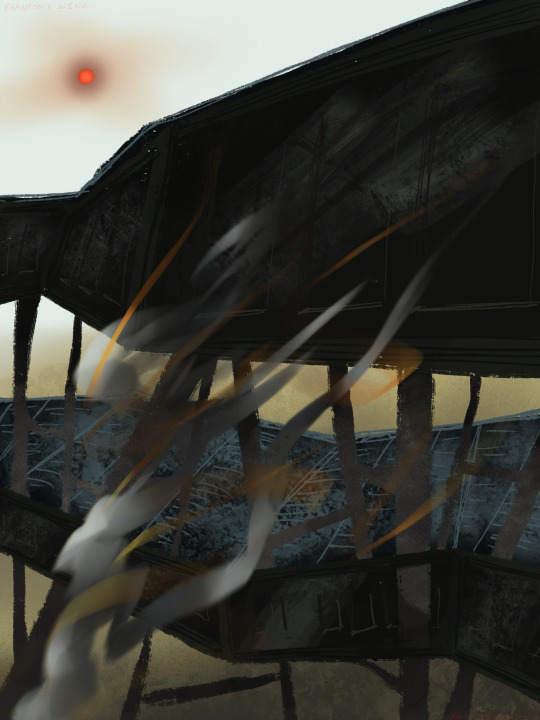
cover for my hypertext story from college, "Phantom's Wing". re-upping cause tbh idk how i feel about the story itself but i liked this drawing. you can still read it if you want, it's in my pinned.
3 notes
·
View notes
Text
haven’t posted this or my senior capstone but here’s one of two of my pieces of hypertext made back in fall 2023 (not my capstone project, instead me messing around with html LOL)

#I’ll post the other tomorrow I don’t have the photos of it on my phone#neocities#hypertext#interactive literature#my art#dinosaur
6 notes
·
View notes
Text
The Emergent Power of a Web of Notes with Links
Below is a fairly accurate reflection of my writing process and how my blogs start! Takes a while for them to form into a vaguely coherent structure for me to share more widely! Autism isn’t linear, my thought process and way of being is monotropic, multi sensory, neuro-holographic, rhizomatic and omnidirectional. I shared this last year. Follows on nicely… – Helen Autistic Realms |…
3 notes
·
View notes
Text
Surface Flatness | 2412
Don’t you think that the surface of the Internet feels super flat right now? I don’t just mean it's UX but the whole internet.
youtube

View On WordPress
#90s#CD-ROM#cyberspace#Flatness#hypermedia#hypertext#internet#jay springett#permanently moved#platform#podcast#social media#somatics#thejaymo#twine#Youtube
2 notes
·
View notes
Text

#ahhh yes yes#fave#Shelley Jackson#patchwork girl#Frankenstein#hypertext#90s#electronic literature#feminism#hysterical narrative#fragmented#narratology
6 notes
·
View notes
Text
youtube
This is pretty amazing, because it has several things in common with a web browser (including being accessible through a network), a couple of years before the World Wide Web
Jan Walker of Symbolics Research describes and demonstrates an early hypertext browser which implemented an online WYSIWYG using SGML text and embedded images in 1985. Source files could be distributed across a diverse network accessible via CHAOS NFILE or IP-TCP FTP (and later NFS). It offered groundbreaking features such as hypertext interlinking of documents, direct linking to sections within a single document, embedded images, indexing of documents for searching via keywords, browsing history and bookmarking.
via https://mastodon.social/@jbzfn/112039805049491828
3 notes
·
View notes
Text
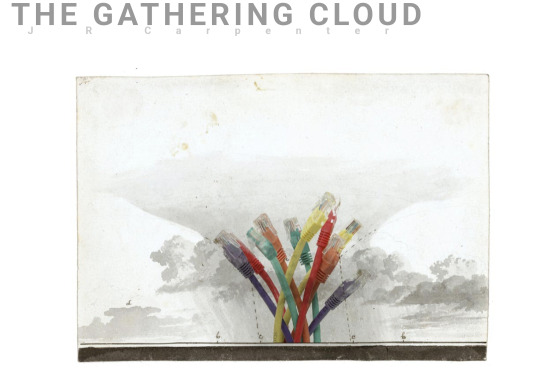
The Gathering Cloud by J.R. Carpenter
#hypertext#electronic literature#the gathering cloud#the Internet#weather#environmental waste#links#nobody is ever going to look at my e-literature recommendations but I am at peace with this fact#2016
5 notes
·
View notes
Text
Exploring Modern Website Development Technologies: Best Comprehensive Guide
HTML5, the fifth and latest version of Hyper Text Markup Language, remains the backbone of web development. It provides the structural foundation for web content, allowing developers to define the structure of a webpage with elements like headings, paragraphs, links, and images. HTML5 has introduced new elements and attributes that enhance multimedia capabilities, making it very easier to embed videos, audio, and interactive content.
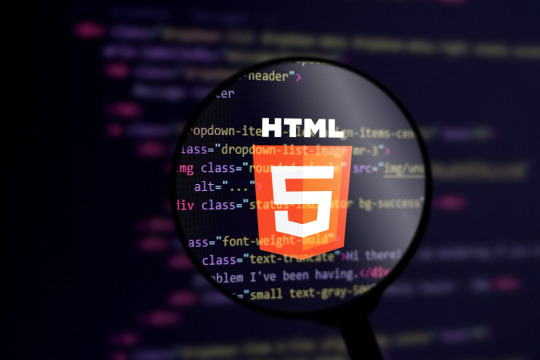
2 notes
·
View notes
Quote
Hypertext is truly a new and unique environment. Artists who work there must be read there. And they will probably be judged there as well: criticism, like fiction, is moving off the page and on line, and it is itself susceptible to continuous changes of mind and text. Fluidity, contingency, indeterminacy, plurality, discontinuity are the hypertext buzzwords of the day, and they seem to be fast becoming principles, in the same way that relativity not so long ago displaced the falling apple.
The End of Books
3 notes
·
View notes
Text

Literary Machines: The Report On, and Of, Project Xanadu Concerning Word Processing, Electronic Publishing, Hypertect, Thinkertoys, Tomorrow's Intellectual Revolution, and Certain Other Topics Including Knowledge, Education and Freedom.
#archive.org#internet archive#software#book#ebook#computers#retro computing#xanadu#personal computer#bingo#Theodor Holm Nelson#publishing#hypertext#word processing
0 notes
